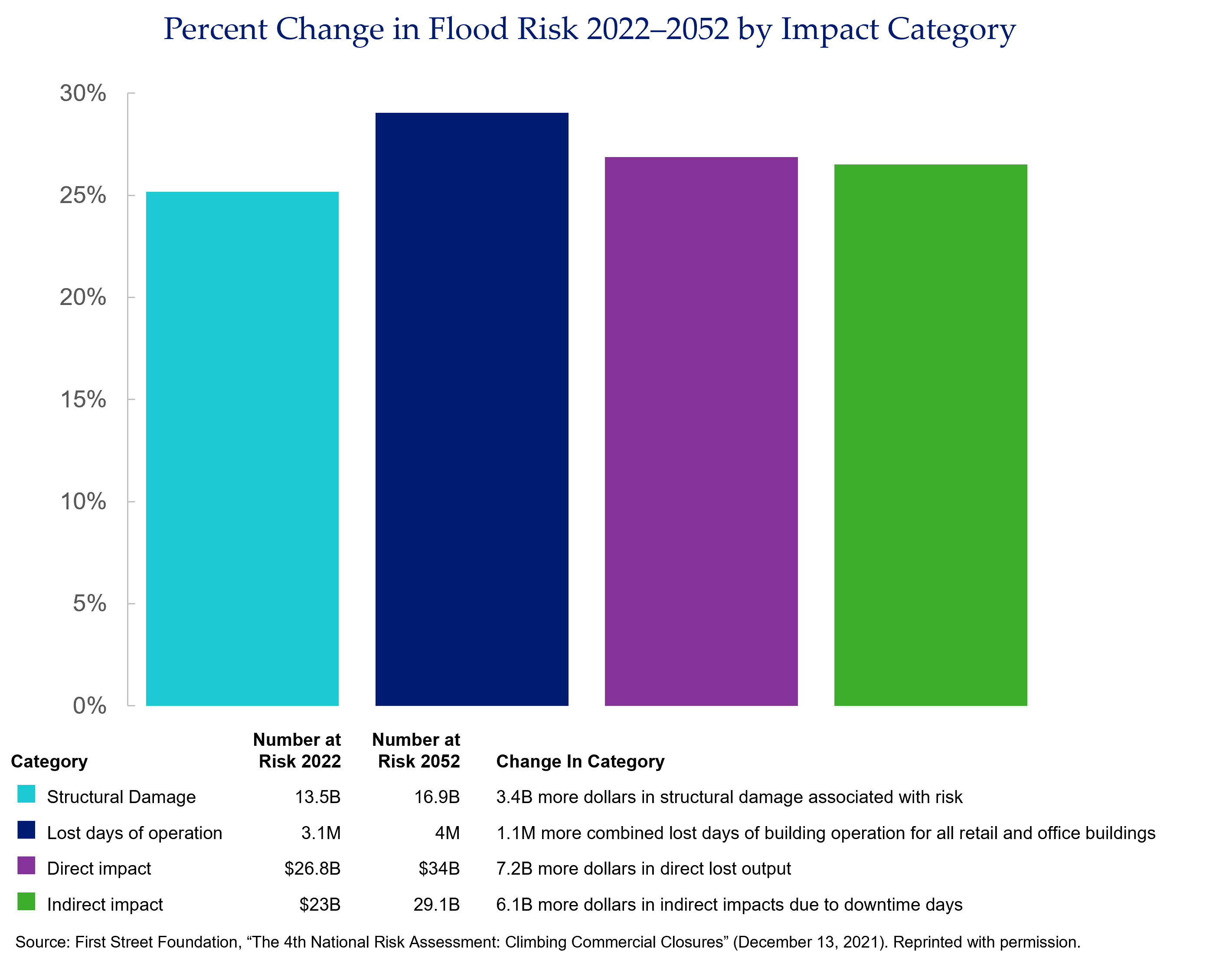

Archived Insight | March 15, 2022
By Susan Ginexi
Last year was the third most active U.S. hurricane season on record. It was also the sixth consecutive above-normal Atlantic hurricane season, according to the National Oceanic and Atmospheric Administration, (NOAA). In 2021, there were 21 named storms and four major hurricanes that were often accompanied by torrential rains and extensive flooding that overwhelmed sewers, causing flooding in unexpected places.
While most flood insurance claims come from what the National Flood Insurance Program calls Special Flood Hazard Areas, which have a high risk of flooding, more than 40 percent of claims in recent years have come from areas that have a moderate-to-low risk of flooding. Between 1996 and 2019, 99 percent of all U.S. counties experienced a flood event, according to the Federal Emergency Management Agency (FEMA).
Consequently, regardless of where your property is located, it’s important to ensure your organization has the right flood coverage in place. This article looks at flood projections and discusses how to assess whether your organization has sufficient coverage to provide protection if your property is damaged in a flood.
A recent report from the nonprofit First Street Foundation and global engineering firm Arup, “The 4th National Risk Assessment: Climbing Commercial Closures,” looked at the risk of flood damage to 3.6 million retail, office and multi-unit residential properties across the U.S. Key findings include:

In response to the increase in extreme weather events resulting higher instances of flooding, FEMA has introduced a new risk-rating methodology that’s based on industry best practices and uses cutting-edge technology. Risk Rating 2.0 uses more data to estimate a property’s flood risk and deliver rates that, per FEMA, are “actuarily sound, equitable, easier to understand and better reflect a property’s flood risk.”
This change means certain properties will see an increase in premiums while others may experience a decrease. More importantly, premiums will be based on a more accurate rating system than in the past.
It’s a good idea to review your commercial insurance coverages to verify if you are adequately protected in the event of a flood.
Commercial insurance coverages do not always include flood protection. Even if they do, in geographic areas that have a high flood risk, it may be prudent to purchase a stand-alone flood policy. If you have a mortgage, the lender can require flood insurance depending on your flood zone.
Segal offers a complimentary policy review to assess the appropriateness of your current property and casualty coverage and flood coverage.
As part of our review we will:
As a leading broker for plan sponsors for decades, we have the experience to give you insights into coverage gaps and options for closing them.
Ask us to review your commercial insurance coverages.
Contact Our Expert
Insurance, Multiemployer Plans

Health

Organizational Effectiveness, Corporate, Higher Education
This page is for informational purposes only and does not constitute legal, tax or investment advice. You are encouraged to discuss the issues raised here with your legal, tax and other advisors before determining how the issues apply to your specific situations.
© 2024 by The Segal Group, Inc.Terms & Conditions Privacy Policy California Residents Sitemap Disclosure of Compensation Required Notices
We use cookies to collect information about how you use segalco.com.
We use this information to make the website work as well as possible and improve our offering to you.